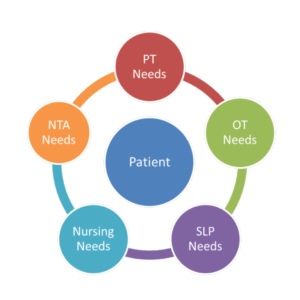Facility-to-community transition program success highlighted in report
Almost 38 percent of those transitioning from long-term care facilities to home- and community-based settings via a federal pilot program between January and June 2013 were aged 65 years or more, and home was their favored destination. Eight percent of participants in that age group were reinstitutionalized within 30 days during that same time period, however.
That’s according to the “Money Follows the Person [MFP] Demonstration: Overview of State Grantee Progress, January to June 2013” (PDF) report by Mathematica Policy Research. The report also details the states with the highest and lowest reinstitutionalization rates.
Congress established the MFP pilot project, which now has total funding of $4 billion, in 2005. Through the program, state Medicaid programs can transition beneficiaries living in long-term care facilities to home- and community-based programs, where they can receive their long-term care services and supports. The Centers for Medicare & Medicaid Services has awarded grants to 46 states and the District of Columbia, although at the time of the report, programs had not begun in a few of the participating states (Alabama, Montana and South Dakota) and were stopped in a couple of states (Florida and New Mexico). Also, Oregon temporarily suspended its program. Forty-one states had programs that were considered active during the period studied.
Highlights of the report:
- 35,000 people have transitioned to community settings since the program began in 2008. The states with the largest programs—Ohio, Texas and Washington—accounted for 40 percent of cumulative enrollment.
- About 4,800 new MFP participants were transitioned from facility to community care during the first half of 2013, 1.8 percent fewer than in the same time span in the previous year. This is the first time since the start of the program that the number of new enrollees decreased from the previous reporting period.
- 39.3 percent of those transitioned were people aged fewer than 65 years who have physical disabilities, 37.7 percent were adults aged at least 65 years, 14.6 percent were individuals with intellectual or developmental disabilities, 7.5 percent were people with mental illness, and 1 percent were “other” individuals.
- Of the MFP participants who transitioned to the community during the first half of 2013, almost 39 percent chose to live in an apartment, 35 percent moved to a home, about 14 percent moved to a group home with four or fewer residents, and about 9 percent chose to live in an apartment in a qualified assisted living facility. This breakdown mirrors the previous reporting period.
- Home was the most popular choice of residence among senior participants transitioning during the first half of 2013, with 47 percent of them choosing this setting. The next most popular setting was apartment (36 percent), followed by assisted living apartment (13 percent) and group home (4 percent).
- The rate of reinstitutionalization over 30 days—an indication of transition success—was 6 percent overall and ranged from 0 to 36 percent in individual states. More than half of the states with active programs had rates between 0 and 4 percent. Adults aged 65 or more years had the highest rate of reinstitutionalization, at 8 percent. The rate was 7 percent in individuals with mental illness and 5 percent in those with physical disabilities who were aged fewer than 65 years.
- Rhode Island had the highest rate of reinstitutionalization over 30 days among older adults, at 50 percent. The rates for Kansas, Kentucky, Nevada, Oklahoma and Tennessee were more than 20 percent. Ten grantees—Arkansas, Colorado, District of Columbia, Iowa, Maine, Minnesota, Mississippi, North Carolina, South Carolina and West Virginia—reported no reinstitutionalizations over 30 days of seniors during the study period. The report notes, however, that Iowa’s program does not serve older adults and that the programs in Colorado, Minnesota, South Carolina and West Virginia began operating during the study period and have a small number of participants.
- The goal for 2013 was to transition almost 12,000 people to community settings in 2013. The 4,800 transitions that had occurred as of June represents the lowest midyear rate of progress since June 2009 and may be the result of unrealistic goals of greater-than-expected barriers to transitions.
See other content by this author here.
I Advance Senior Care is the industry-leading source for practical, in-depth, business-building, and resident care information for owners, executives, administrators, and directors of nursing at assisted living communities, skilled nursing facilities, post-acute facilities, and continuing care retirement communities. The I Advance Senior Care editorial team and industry experts provide market analysis, strategic direction, policy commentary, clinical best-practices, business management, and technology breakthroughs.
I Advance Senior Care is part of the Institute for the Advancement of Senior Care and published by Plain-English Health Care.
Related Articles
Topics: Executive Leadership , Medicare/Medicaid , Regulatory Compliance










